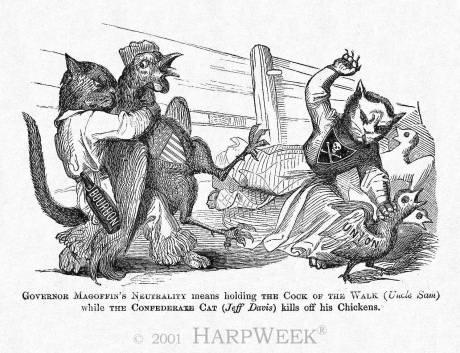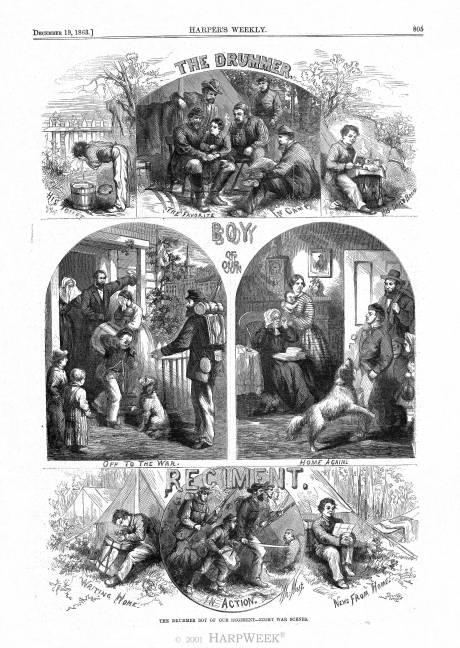Using the Harper’s Weekly website, select TWO political cartoons or illustrations from two different years of the Civil War era (April 1861-1865).
Using the Harper’s Weekly website, select TWO political cartoons or illustrations from two different years of the Civil War era (April 1861-1865). Write about the pair you have chosen together in a paper that analyzes two Harper’s Weekly cartoons or illustrations. You should develop a thesis that you support with evidence from your analysis of the political cartoons that you chose. If you have not previously analyzed political cartoons in a college history course, work through this web resource http://historymatters.gmu.edu/mse/sia/cartoon.htm before writing your paper.
Answer
History using the Harpers review website Essay
By: Essayicons.com
During the civil war era, Harper’s Weekly was a major publication that played a significant role in shaping Americans’ opinions through its publication of political cartoons and illustrations. The two chosen cartoons for this paper included the popular “Governor Magoffin’s Neutrality” and “The Drummer-Boy of Our Regiment.” Ultimately, this paper aims to analyze the two aforementioned cartoons through their visual narratives, highlighting the complexities of the war, the prominent role figures played and the effects on American society.

Governor Magoffin’s neutrality
The above Harper’s Weekly political cartoon displays a case study that illustrates how 19th-century historians interpreted various historical evidence and events. This cartoon, “Governor Magoffin’s neutrality”, was designed by an unknown artist on June 29, 1861, just two months after the war (Harper’s Weekly, 1861). Through the cartoon, the artist captures Kentucky’s governor, Beriah Magoffin, who favoured neutrality as the war began. Magoffin is displayed as the one holding “Uncle Sam, cock of the walk”, which is meant to be the United States, while the cat is the Confederate depicting the confederacy. This political carton means that the Kentucky governor is in the middle of the two sides, and his neutrality is being challenged. Generally, Kentucky was situated at the border of the Northern and Southern states, hence the leader had to adopt neutrality to avoid taking sides and keep the state out of the conflict (Bergeret, 2023). However, the neutral position was cumbersome to maintain as both sides sought to control and support from Kentucky. Thus, the artist points out the difficult position faced by states at the border of the Union and Confederacy and the challenges their leaders faced while sailing through conflicting alliances as the Northerners and Southerners sought support from such states.

The Drummer-Boy of Our Regiment, Thomas Nast.
Apart from Magoffin’s political cartoon, Harper’s Weekly magazine also created the above cartoon. This demonstration, “The Drummer-Boy of Our Regiment”, was published on December 19, 1863, by the remarkable artist Thomas Nast (Nast, 1863). This portrayal represents a young male drummer who took part in the conflict, depicting the role of children in the war. Among their duties included “serving a vital role in enforcing soldiers’ schedules and relaying battlefield orders by means of their iconic drums” (Bergeret, 2023). Generally, the carton is all about kids who took part in the conflict, despite being young (Schuette & Armstrong, 2018). Probably, the featured kid is Johnny Clem, as he was the popular drummer boy at the time. In the cartoon, the boy stands confidently in his uniform, symbolizing he is dedicated to the course. This portrayal reiterates the sacrifices of children during the conflict and the tremendous impact it had on their families. In addition, it points out the determination and resilience of young kids as nine who took part in the war, thus, providing an insight into the human factor of the Civil War.
To sum up, the two aforementioned Harper’s Weekly political cartoons offer a vivid enlightenment into the politics of the war and its impacts on society and people at large. Notably, they portray political obstacles faced by political figures like Kentucky’s governor, who found himself in the middle of the Confederacy and the Union. Similarly, the cartoons capture the place of kids during the conflict and how it influenced society. Generally, the two cartoons serve as pivotal historical artefacts to shed light on the civil war.